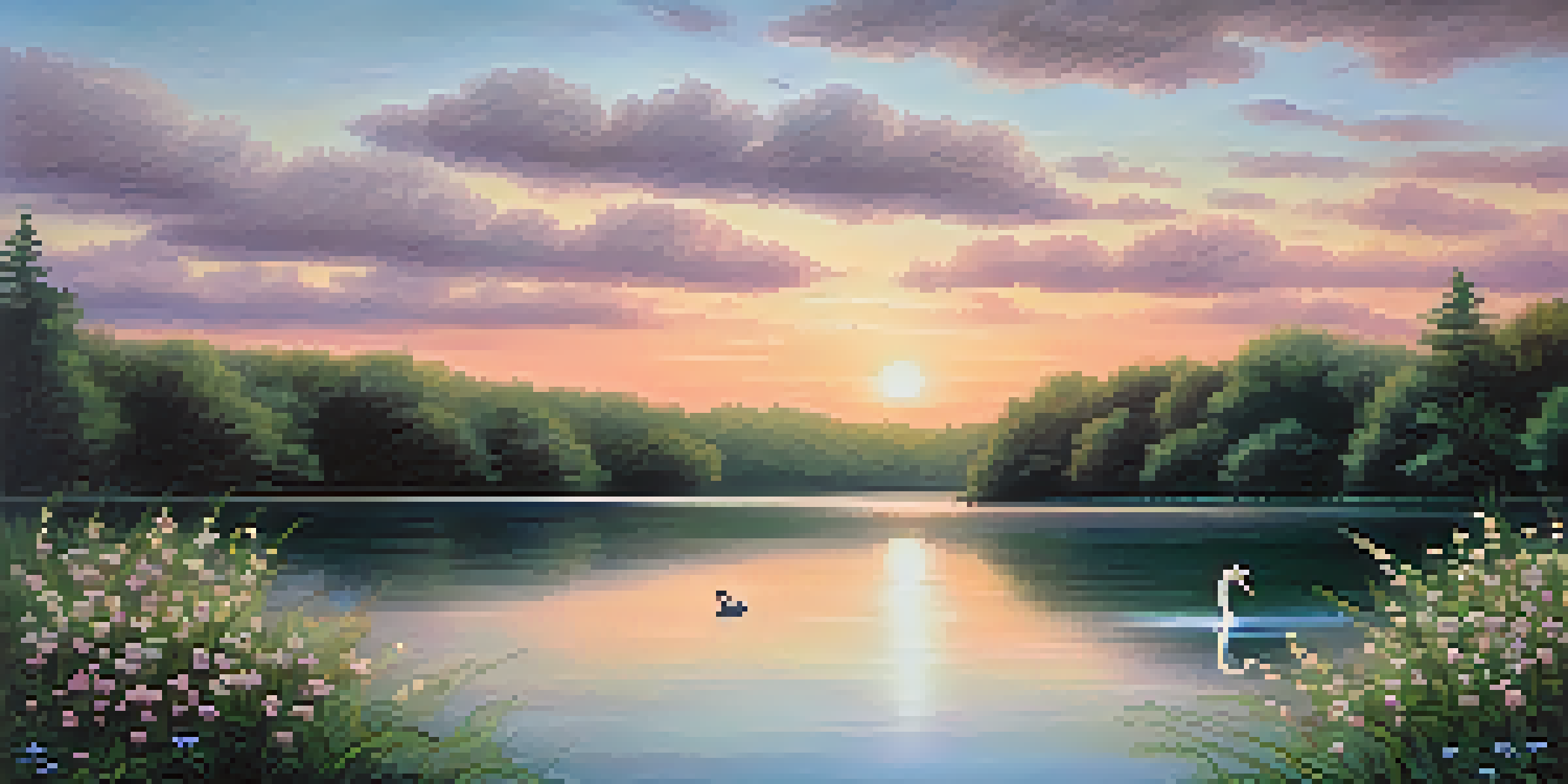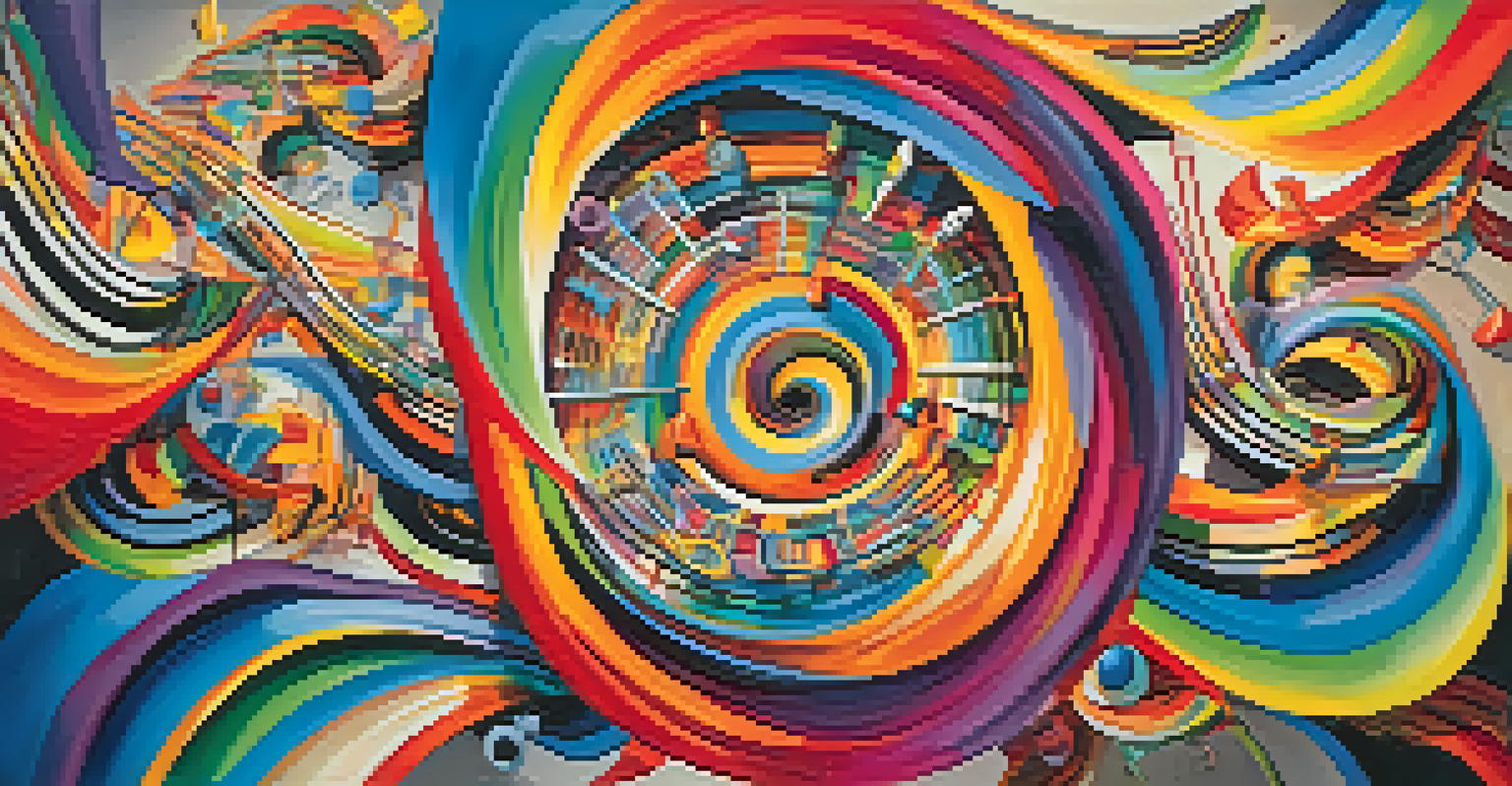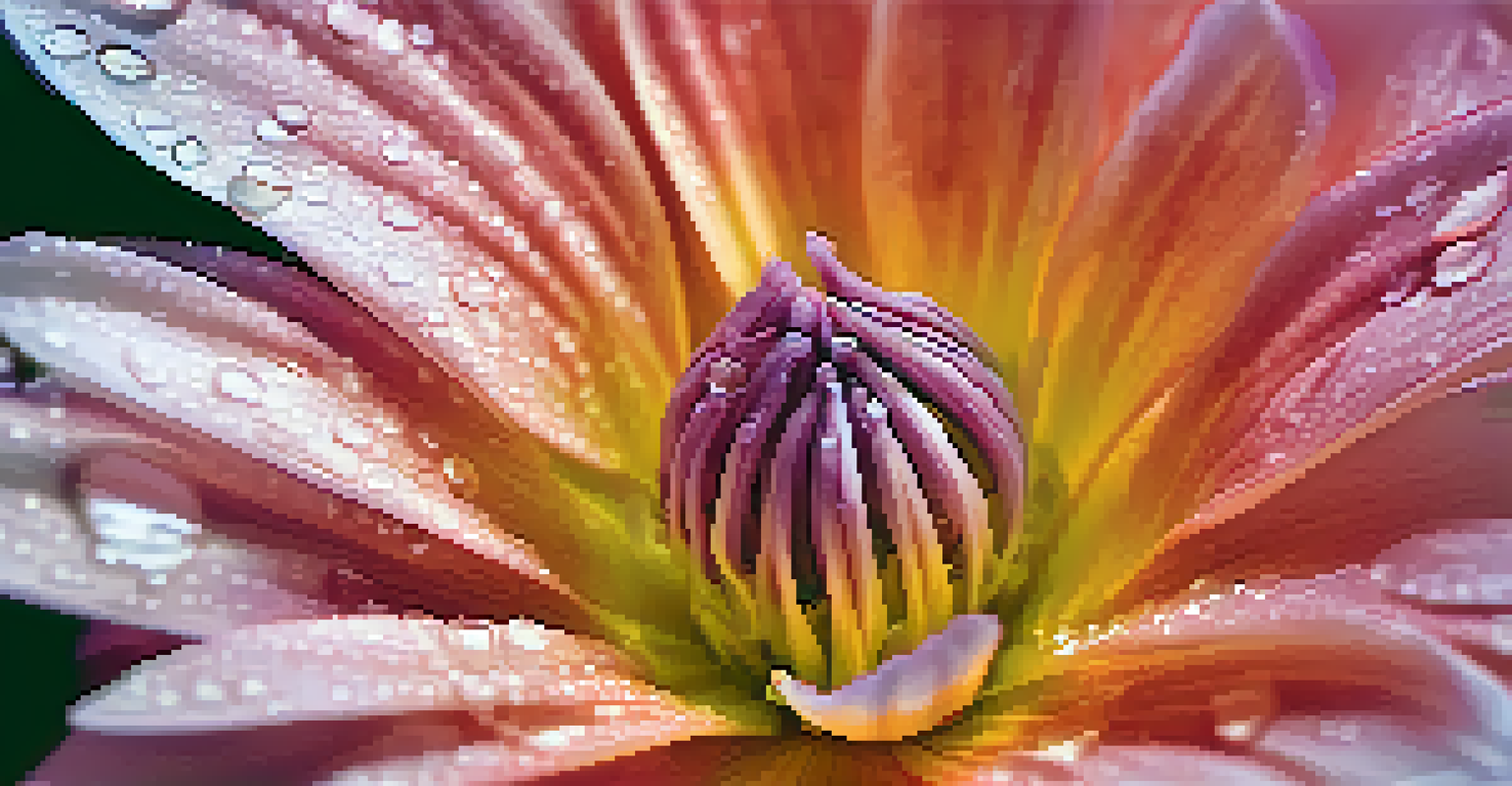The Use of Visual Metaphors in Music and Art Collaborations

Understanding Visual Metaphors in Art and Music
Visual metaphors are powerful tools that convey complex ideas through imagery. In the context of music and art, they create a bridge between auditory and visual experiences. For instance, a song about love may be paired with artwork depicting blooming flowers, symbolizing growth and beauty.
Art is the most beautiful of all lies; it is a visual metaphor that allows us to express the inexpressible.
These metaphors help audiences engage on a deeper emotional level, allowing them to interpret the piece in a personal way. By using recognizable symbols, artists can evoke feelings and thoughts that resonate with listeners and viewers alike. This connection fosters a richer understanding of the themes presented.
Moreover, visual metaphors can enhance storytelling in music, transforming abstract concepts into tangible representations. They invite us to explore the layers of meaning behind the art, encouraging us to reflect on our interpretations and experiences.
The Role of Collaboration in Creating Visual Metaphors
Collaboration between musicians and visual artists often leads to the creation of compelling visual metaphors. This partnership allows for a fusion of ideas, styles, and perspectives that enriches both mediums. When a musician works with an artist, they share their visions, fostering a creative synergy that can result in innovative expressions.

For example, an album cover might feature an illustration that encapsulates the essence of the music within. The collaboration can extend beyond just visuals; music videos often blend music with visual storytelling, enhancing the overall experience for the audience. Such teamwork can highlight the metaphorical connections between sound and imagery.
Visual Metaphors Enhance Engagement
Visual metaphors in art and music create emotional connections, allowing audiences to interpret and engage with the themes on a personal level.
Additionally, these collaborations challenge traditional boundaries, prompting both artists to think outside the box. By merging their talents, they can create something uniquely impactful that speaks to the audience’s emotions, prompting them to engage with the artwork on multiple levels.
Historical Examples of Visual Metaphors in Music and Art
Throughout history, there have been iconic collaborations that showcased the power of visual metaphors. One notable example is the work of Pink Floyd and their album 'The Dark Side of the Moon,' which features a prism as a visual metaphor for light and sound. The imagery perfectly complements the album's themes of complexity and reflection.
Music can change the world because it can change people.
Another striking instance is the collaboration between musician David Bowie and artist Brian Duffy, who created memorable album covers that visually represented the music's avant-garde spirit. Bowie's persona, combined with Duffy's photography, produced a series of iconic images that have become synonymous with the artist’s identity.
These historical examples illustrate how visual metaphors can transcend time, leaving a lasting impact on both music and art. They serve as reminders of how intertwined these forms can be, inspiring future generations of artists to explore similar collaborations.
Contemporary Uses of Visual Metaphors in Music Videos
In the digital age, music videos have become a primary platform for exploring visual metaphors. Artists often use symbolic imagery to enhance their storytelling, creating a visual narrative that complements the lyrics. For instance, a music video may depict a journey through a surreal landscape to represent the emotional highs and lows of a song.
These visual metaphors allow viewers to connect more deeply with the music, as they provide a visual context to the sounds they hear. The synergy between the audio and visual elements can evoke strong emotional responses, making the experience more memorable. This interplay encourages audiences to interpret the meaning behind both the music and the imagery.
Collaboration Fuels Creativity
The partnership between musicians and visual artists fosters innovative expressions that highlight metaphorical connections between sound and imagery.
As technology advances, the possibilities for visual metaphors in music videos continue to expand. Filmmakers can experiment with animation, CGI, and other techniques to create stunning visuals that push the boundaries of creativity, inviting viewers to engage with the art on a whole new level.
The Psychological Impact of Visual Metaphors
Visual metaphors can significantly influence how we perceive music and art on a psychological level. They help to create mental associations that enhance our understanding and emotional connection to a piece. For example, seeing a turbulent ocean while listening to a song about struggle can deepen our empathy towards the themes presented.
This psychological effect is rooted in our brain's ability to process visual stimuli quickly. When we encounter a visual metaphor, it can evoke memories and emotions related to our own experiences, making the art more relatable. This connection can lead to a more profound appreciation of the music and its accompanying visuals.
Ultimately, the use of visual metaphors encourages audiences to engage in active interpretation, inviting them to explore their feelings and thoughts. This engagement can foster a lasting impact, as the associations formed through these metaphors may linger long after the music has stopped.
Challenges in Creating Effective Visual Metaphors
While visual metaphors can be powerful, creating them effectively poses several challenges for artists. One major challenge is ensuring that the metaphor resonates with the intended audience. If the symbolism is too obscure or complex, it may lead to confusion rather than clarity.
Another aspect to consider is the balance between visual and auditory elements. An overwhelming visual metaphor might distract from the music, leading to a disjointed experience. Artists must strive to create a harmonious relationship between the two, allowing them to enhance, rather than overshadow, one another.
Future Trends in Artistic Expression
Emerging technologies and interdisciplinary collaborations are set to evolve visual metaphors, creating immersive experiences and new interpretations in art and music.
Additionally, artists must remain mindful of cultural differences that may influence interpretations of visual metaphors. What may be a widely understood symbol in one culture could be perceived differently in another. This challenge requires artists to be sensitive and thoughtful in their creative processes, ensuring their messages are communicated effectively.
The Future of Visual Metaphors in Music and Art
As we look to the future, the use of visual metaphors in music and art is likely to evolve alongside emerging technologies. With advancements in virtual reality and augmented reality, artists have new tools at their disposal to create immersive experiences that blend sound with striking visuals. This technological integration could give rise to entirely new forms of artistic expression.
Moreover, the growing emphasis on interdisciplinary collaborations suggests that we may see even more innovative synergies between musicians and visual artists. By combining their unique skills and perspectives, they can create dynamic works that push the boundaries of both art forms. This trend encourages creativity and experimentation, leading to exciting new interpretations of visual metaphors.

Ultimately, the future of visual metaphors in music and art holds endless possibilities. As artists continue to explore and challenge traditional notions, we can look forward to a vibrant landscape where sound and imagery harmoniously coexist, enhancing our experiences and understanding of art in all its forms.